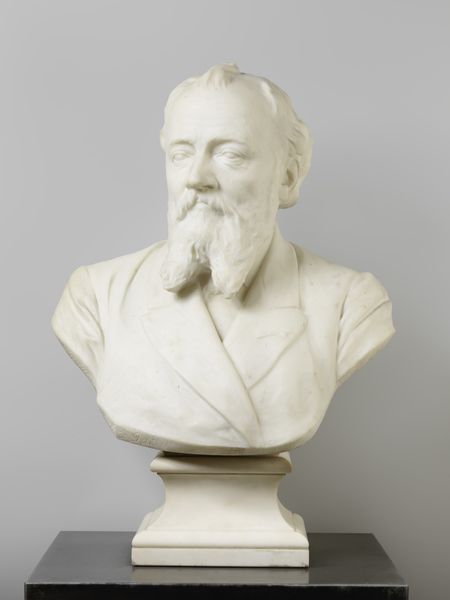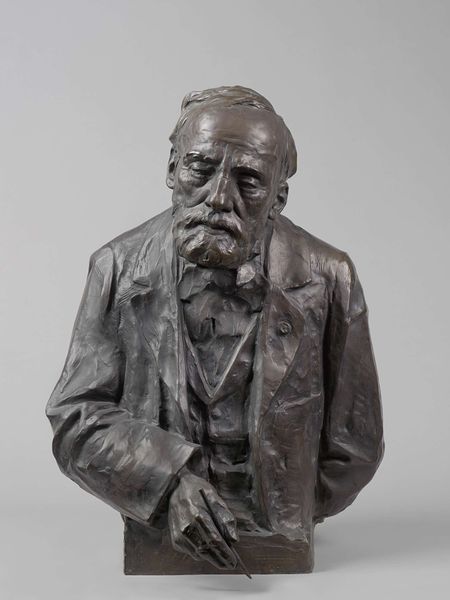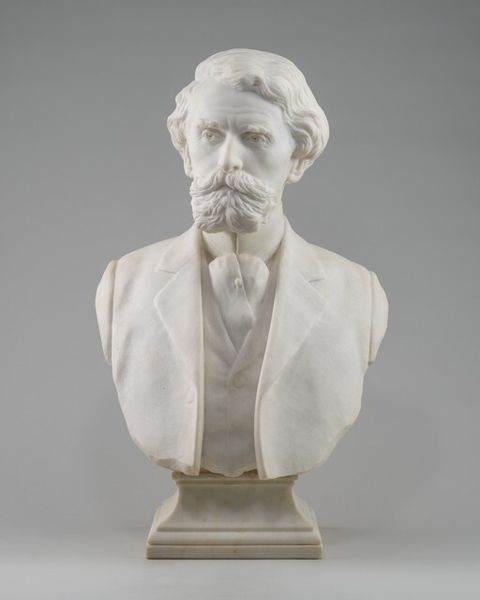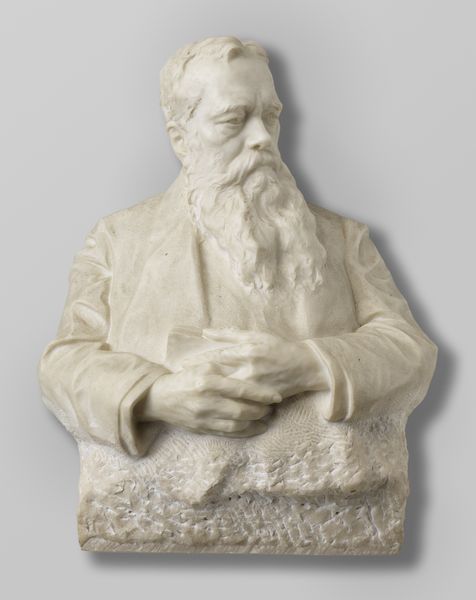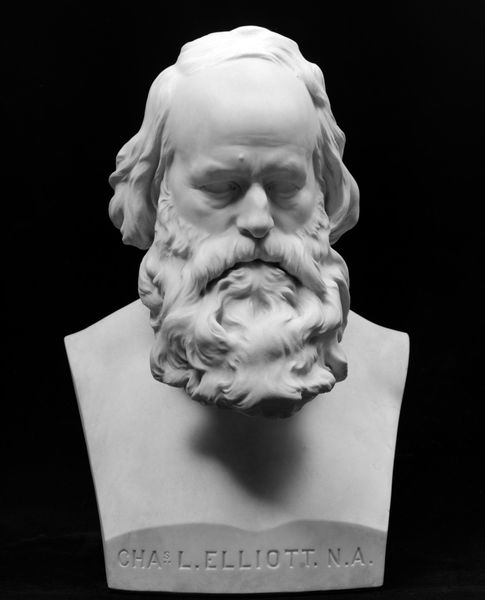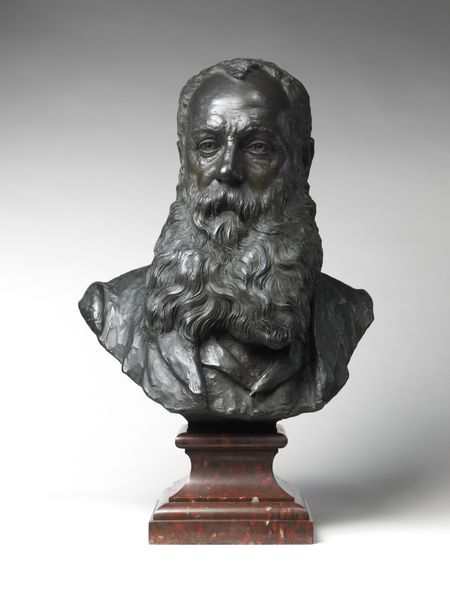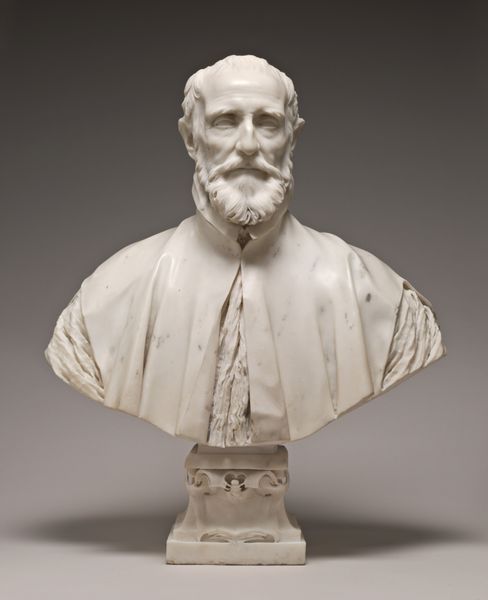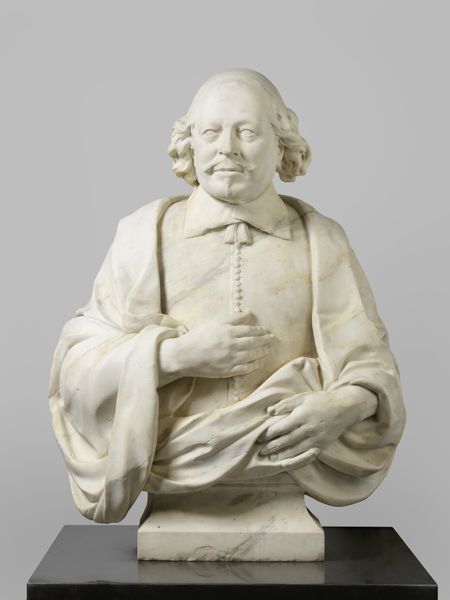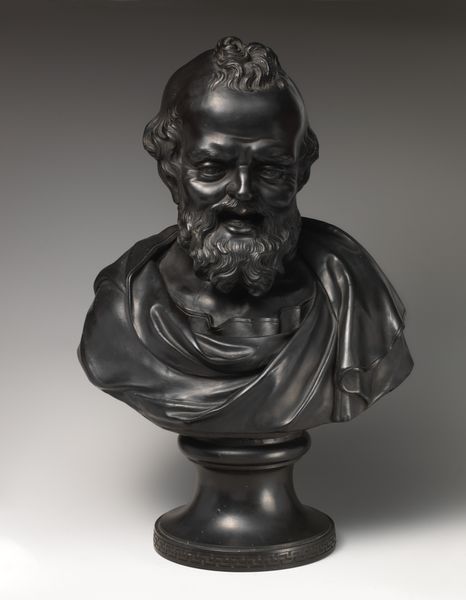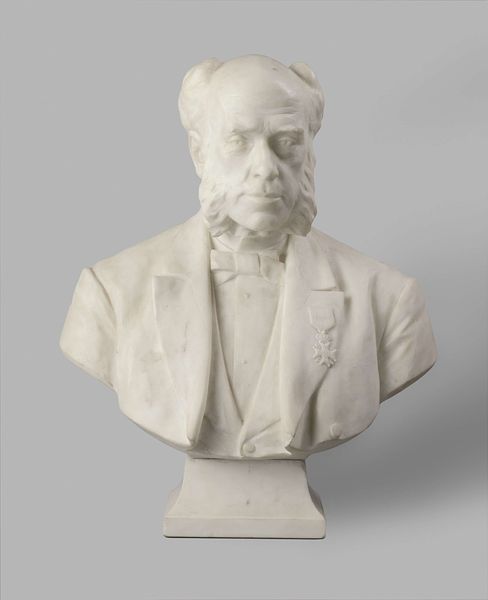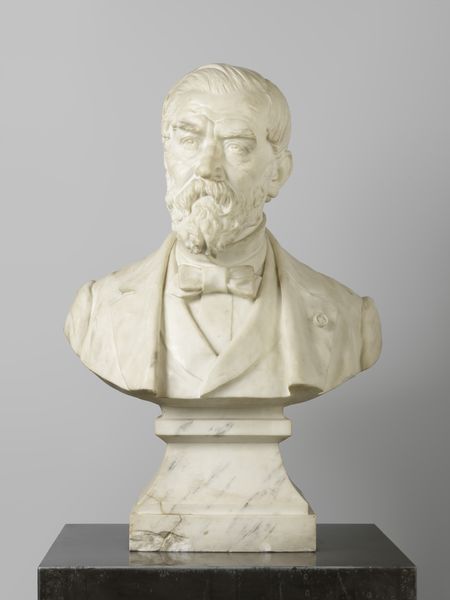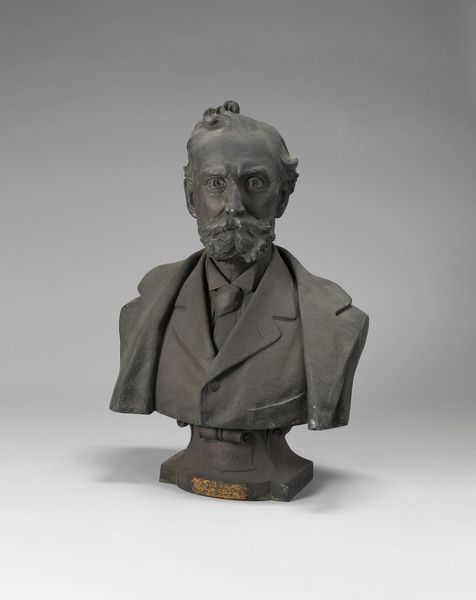
Buste van Dr. Petrus Josephus Hubertus Cuypers (1827-1921), architect met bijbehorende rechthoekige sokkel van zwart graniet met grijs mica 1912
0:00
0:00
Dimensions: height 70.0 cm, width 61.0 cm, depth 40.0 cm, weight 170 kg
Copyright: Rijks Museum: Open Domain
Editor: This marble bust, sculpted by Toon Dupuis in 1912, depicts Dr. Petrus Josephus Hubertus Cuypers. I find his downward gaze and the detailed carving of his beard so compelling; he appears both distinguished and somewhat melancholic. What’s your take on this piece? Curator: The choice of marble is certainly deliberate, linking Cuypers to the tradition of classical portraiture that emphasized the importance of its subjects. Cuypers was a significant architect known for his role in revitalizing Gothic Revival architecture in the Netherlands, and Dupuis likely chose to present him in a way that underscored this connection to the past, specifically, and his contributions to the nation. How do you see that playing out here, given what we know about how art often operates within systems of power and prestige? Editor: It’s interesting that you mention the "revitalization" – it makes me wonder if the classicism hints to not only the past and tradition, but a specific idea of national identity, perhaps even nation-building. Does the museum context shape our understanding of it today? Curator: Precisely. The Rijksmuseum, itself a Cuypers design, houses this bust, creating a layered narrative of national artistic identity. Presenting Cuypers in marble, the same medium used for Roman emperors and Greek gods, elevates his status, shaping public perception of architecture and its role in constructing cultural heritage. How does the work's placement affect its message, do you think? Editor: It certainly reinforces it! By placing it within his own architectural masterpiece, the Rijksmuseum is further cementing his legacy and presenting a particular narrative about Dutch cultural identity. Thank you, I've definitely learned something today! Curator: And so have I! It's through questioning these institutional framings that we reveal art’s dynamic social function.
Comments
No comments
Be the first to comment and join the conversation on the ultimate creative platform.

